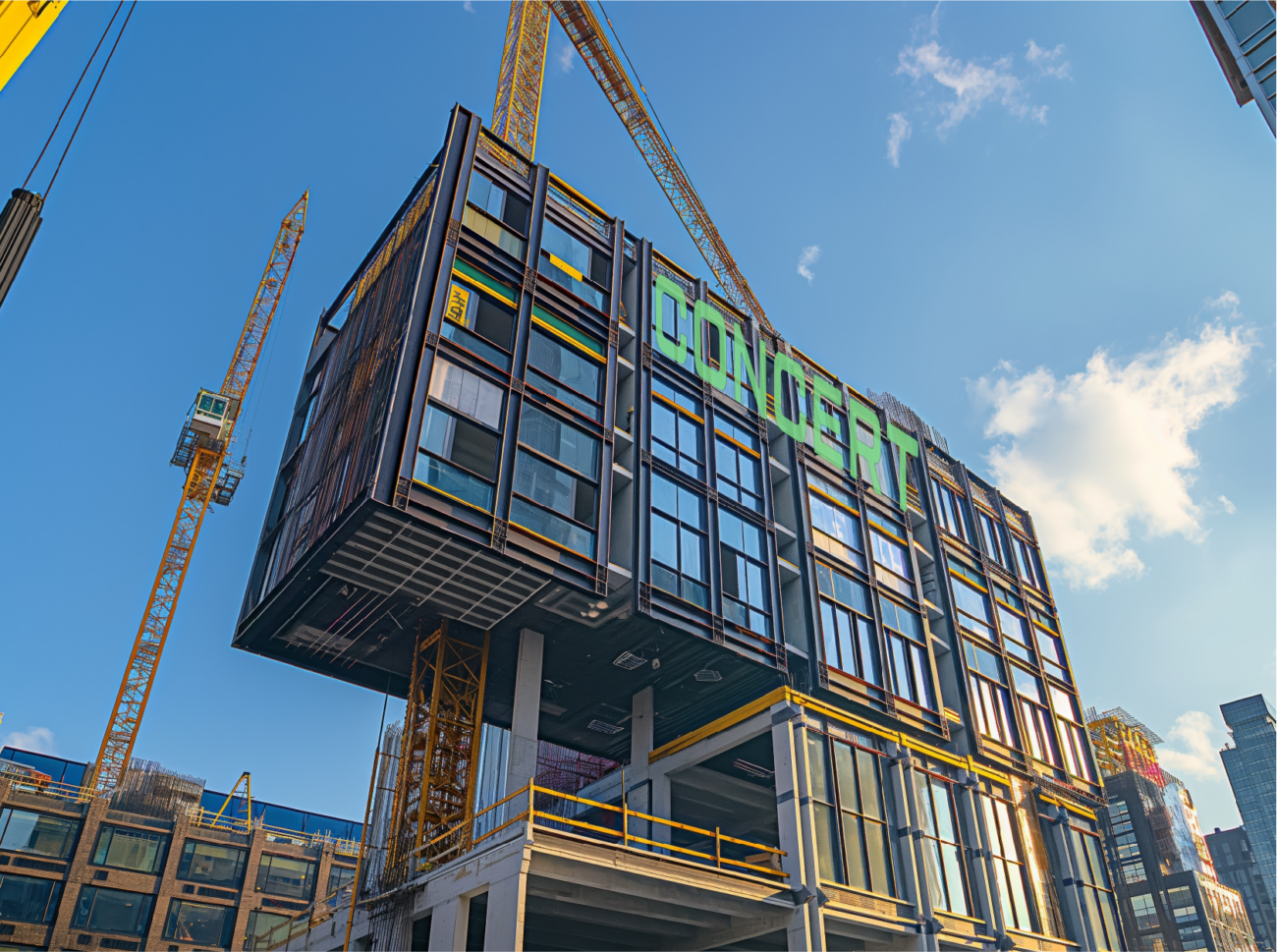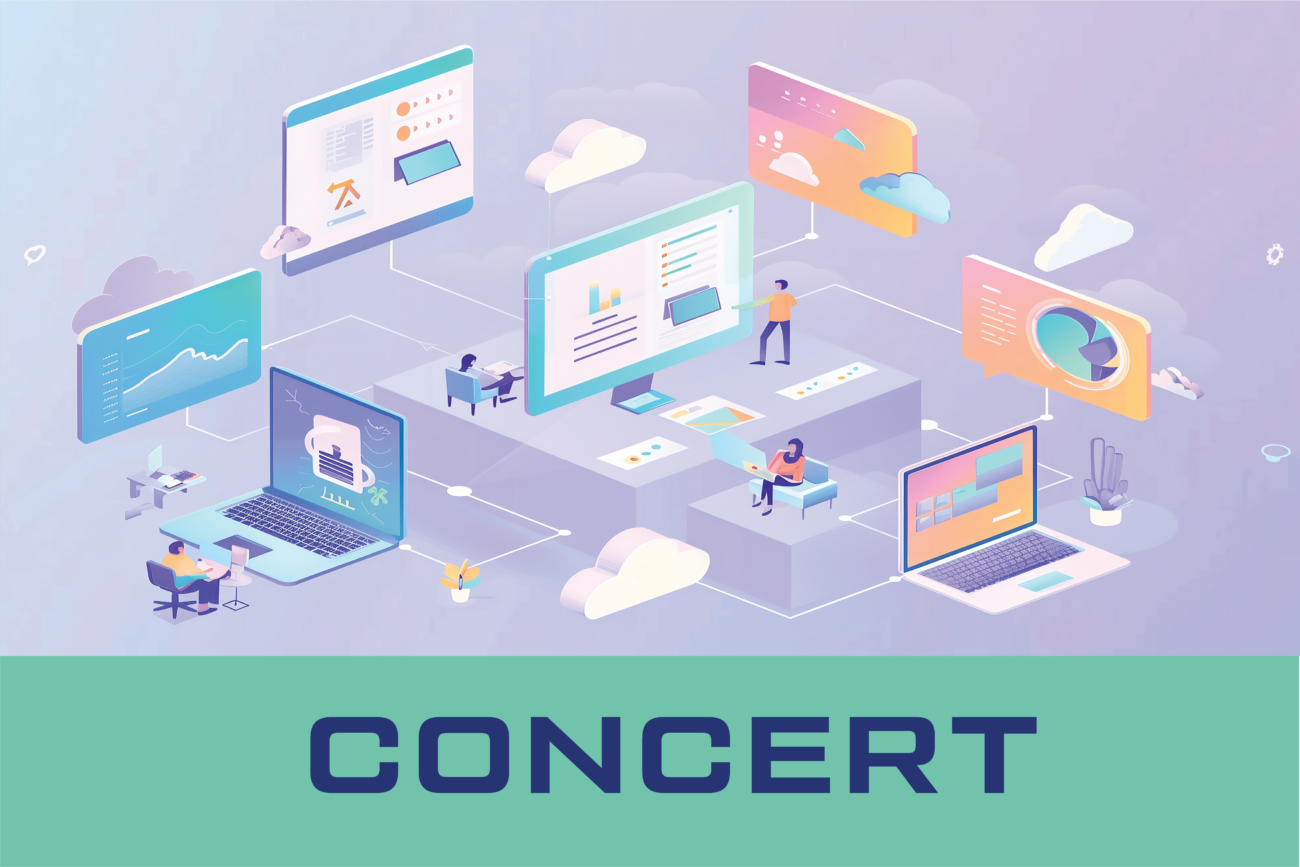Follow Concert on LinkedIn for more on the digital future of architecture.
In our last instalment, we discussed the role of the architect in authorizing data for use in building construction and how Concert uses the latest technology to ensure authorship and copyright protections. In this instalment, we get into detail about the files themselves.
Trusted File Sharing is Essential to AEC
In the emerging world of digital architecture sharing data is essential to realize the efficiency and risk-mitigation benefits of digitalization. Data flows quickly and fluidly between multiple stakeholders and multiple common data environments across the AECO value chains.
As design advocates, architects play double-duty in both the creation and management of data files to be shared with owners, contractors, city officials, and a host of other stakeholders. The relationship is bi-directional; the owner may request changes or the contractor, clarifications. This process equates to hundreds of exchange cycles, and on complex projects, even more.
Compounding conditions further, emerging design and construction technologies create increasingly sophisticated data streams and digital artifacts, from simple PDFs and spreadsheets to data-rich LIDAR scans and virtual reality experiences — many of which are modified by the stakeholders over the development of the project.
To manage this new digital proliferation, an underlying trust mechanism within file exchange is needed to assure the correct data is received by counterparties and that the ownership of the design data and its IP is verifiable.
The Concert Trust Mechanism
Concert was developed to provide a trust mechanism for design data. At the most basic level Concert is a registry of your creative and technical work. Data files of any type (RVT, DGN, PDF, STL or more) can be registered on our database via a web-based app that scans your files and creates a unique “fingerprint” of that file. This fingerprint is then cryptographically associated with your company or organizational identity. The fingerprint scan is fast because it only reads the binary data of the file, not the information within. The result is a digital fingerprint that is unique to a particular file.
Once registered, Concert associates your data files with the other versions of the same file through time. This turns them into a living history of the project – a complete set of secure, authorized files that can maintain their value throughout the building lifecycle. Doing so allows the data to not only service the design and construction phases but also the operational phase, which may consist of a building management system, digital twin, and/or material passport that needs to be maintained until the building is deconstructed.
Another benefit to registered data is the ability to collaborate confidently knowing that the data you are sharing is immutably documented and timestamped. This not only protects your intellectual property and copyright, but also enables the consumer of your design data to verify they are working with the most current versions.
Next Generation File Searching
Having a digital file registry that contains all versions of a file is an important part of the solution. The other critical component is creating a means to search the directory when all you have is the file itself, and it is outwardly indistinguishable from its predecessors. For example, a sheet-metal fabricator may work with dozens or even hundreds of projects at a time. Their medium of exchange between architects, engineers, and contractors is digital design files. These change frequently as particular solutions are found for specific installations.
The current situation requires constant supervision of the version. However, with Concert, the fabricator can simply drag and drop the file into our reverse look-up tool to ascertain whether they are working from the last authorized version and can pivot to the newest version without the need to wait for confirmation from all of the other players. This saves a massive amount of time, while reducing the risk of rework.
Move Forward in Concert
With Concert, architects can safely and collaboratively share files and IP with anyone — knowing it’s registered, secure, and protected. This is empowering a range of new data-driven products and services that take full advantage of trusted data, and will be a foundational part of digitalization in the quickly evolving AECO industry.
Did you enjoy this article? Follow Concert on LinkedIn for more like this.





